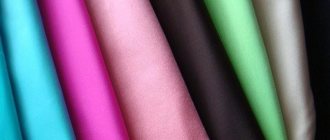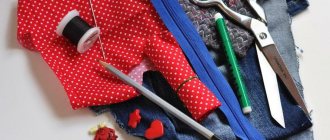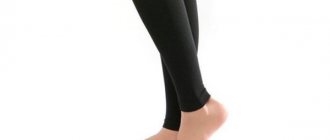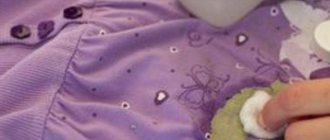Sew lace to the hem of the dress
This is perhaps the simplest and at the same time quite effective way to add length to a dress, while at the same time making it more elegant. It is enough to sew lace to the hem - and a discreet outfit will turn into a flirty, slightly mysterious one. Lace will transform both a straight silhouette and a bell or flare.
When choosing finishing material, it is important to consider its compatibility with the fabric of the dress itself. The lace can be matching or contrasting, thin or denser. Its width depends on how much the product needs to be lengthened.
Sometimes, if you want to lengthen the model quite a bit, it is advisable to add the same lace to the cuffs, neckline or waistline. This way, the thin strip at the bottom won’t look alien.
A similar option for cases where a slight extension is required is decorative braid. It is also better to repeat it somewhere along the top.
Choose the texture of the lace in accordance with the texture of the main fabric. If it is not elastic, then the finish should not be either. Otherwise, the possibility of defective work cannot be ruled out: it is not always possible to sew stretch lace without seating.
Recommendations for lengthening your hem yourself
Fashion designers recommend the following methods to lengthen the hem:
- unraveling the hem;
- adding a lace element;
- yoke insert;
- finishing the bottom hem with a different fabric;
- adding shuttlecocks;
- making a case from a translucent material with a length exceeding the parameters of the clothing.
A train is used as an extension part, which does not need to be sewn. Add a long belt to it and tie it at the waist.
Lace
This openwork product is selected in the same color as the item being renewed. Contrast option available. A less labor-intensive procedure: sewing a strip along the bottom hem line.
The product looks original with lace sewn at a distance of 5 to 10 cm from the bottom of the skirt.
Advice! Lace is not recommended for use as an insert in the waist area. It visually increases volume.
Beads, sequins, and rhinestones will perfectly complement openwork.
Playing with contrasts: an additional stripe
To lengthen the product by 10–20 cm, you should use an insert of the same type of material in a contrasting shade. It is worth considering that bright yellow or white shades go with black, and dark shades with red.
The decoration with multi-colored stripes that differ in width looks original.
Often, to restore the original appearance of a dress, a strip of thick satin ribbons connected to each other is sewn in, but provided that the texture of the fabric is suitable.
Faux leather or translucent material is often used. The idea of creating a product with a motley bottom is interesting. But for a harmonious combination, a decorative strip is added, made of the same material as the dress.
We work at waist level
Lengthening the waist level is a rather labor-intensive process. But if you use your imagination and make an effort, you can create an original outfit.
To do this, you need to cut the seam threads connecting the bodice and skirt. Use steam to smooth out the darts. To make a yoke, take a piece of fabric.
Having measured the required width and length, cut off the part and connect it to the upper and lower parts of the product. The bodice of a garment is lengthened in a similar manner.
Lengthening the waist level is a rather labor-intensive process
When working on a one-piece dress, measure its side seams, since it is necessary to know the distance from the insertion point to the top and to the hem. Having marked the outline, cut and sew in the decorative element.
By adding a belt to the insert, they create an equally original version of updating clothes. To do this, add a bow or fastener to the twisted main section, placing them both at the back and at the front.
Important! It is recommended to sew in a strip of opaque fabric, as this element can visually increase the size of the waist. Dark fabric will make your figure look slimmer.
It's easy to pull a wide skirt down. Having prepared a decorative piece from thick knitted fabric, sew it in like a belt.
Shuttlecocks
The flounce used to lengthen the dress will give it a flirty look. But such a process requires preliminary preparation.
You should immediately think through all the details:
- their number;
- width;
- type of material of manufacture.
The variety of options depends on your imagination. For extension, one or more parts are used. The width of the flounce and the texture of the fabric can also be different.
The tone should match or be combined with the color of the product. After the choice is made, fabric and ribbons of the same color are prepared. They are necessary for finishing the flounce sewn to the bottom of the garment.
Translucent case
To sew a translucent case, use chiffon or organza . A rectangular piece of material is ground down and a thick elastic band is sewn on. It can easily be disguised under a decorative belt.
The dress looks original, complemented by a translucent wrap-around skirt sewn to a wide belt.
How to lengthen a straight dress?
How to lengthen a model in which the skirt is not widened at the bottom? There are many options:
- insert (or several) on the skirt;
- waist insert;
- combination of inserts (on the skirt and at the waist);
- lengthening the bodice;
- raising the waistline;
- fringe;
- cap elements.
Inserts along the skirt prevent the product from looking “stuffed up”. They look more organic than a strip of the same fabric simply stitched to the hem. There can be one or several insertions (for example, decreasing in width). To insert, the skirt fabric will have to be cut crosswise in one or more places. Then, along the cut lines, the dress is connected with finishing strips. It’s quite easy to do this kind of modification yourself.
The inserts at the waist also look very organic, seeming like a finishing belt. But the entire dress can be lengthened.
You can completely change the original appearance of the dress by using a combination of two types of inserts at once: on the skirt and waist.
The extension at the waist is similar to an insert. Only it is much wider in width than just a belt. Such finishing can be denser than the main fabric, or, conversely, thin and elegant. The extension area can be additionally trimmed with embroidery, braid, applique, or emphasized with a beautiful belt or belt, depending on the appearance and style of the product.
We recommend: How to properly clean and wash a jacket at home?
Lengthening the bodice allows you to “spread” the bodice with the skirt, ultimately adding length to the entire dress. It's like arranging a product, only not by width, but by length. In this case, part of the cut insert “pulls out” the bodice, and part – the hips. Such inserts made of lace fabrics look especially original and elegant. When cutting them, if the fabric is not elastic, darts should be formed in the waist area so that the model fits the figure without sagging in the waistband.
Do not use this technique to lengthen items with a very dense fabric texture: in this case, the chest darts will move higher, and ironing will not be possible to give the desired shape to the dress.
Raising the waistline is essentially also an insert that allows you to increase the length. Only structurally it is located somewhat differently: it starts at the waist and goes up, under the chest. This technique looks very impressive on straight-cut dresses (sheath, pencil).
Fringe is a very original way to lengthen the skirt of a dress. At the same time, it is a finishing element that adds slimness and femininity to the silhouette. Fringe allows, on the one hand, to add length to the product, and on the other, to partially maintain it. When moving, the fringe spreads beautifully, revealing the legs; when stationary, it hides them.
Capes play a similar role: if necessary, if the item needs to be lengthened, they can be put on top, covering the knees (for example, in the case of stiletto heels). And if you want to return to the previous length, just remove the cape. The cape can be made either blind or with free front sections. In the second case, she will flirtatiously open her legs when walking.
Ways to add length to a short dress
If the dress has become too small, but still retains its appearance and it is a pity to take it out of the wardrobe, you can update the product a little. This requires cutting and sewing skills, and ideas can be easily selected from illustrations or even borrowed from women's clothing manufacturers.
To lengthen a dress, they use different methods that allow you to complement an old item with new details.
Extend with lace
Lace is suitable not only for young and romantic girls. An elegant sheath dress can be updated according to fashion trends by using different types of lace inserts. Lace is also appropriate on items with a wide and fluffy hem, and goes well with knitwear and other materials.
You can add a lace insert for lengthening:
- Along the bottom line. With this method of lengthening, a strip of lace fabric is sewn to the hem section. Before work, open the hem and iron the fabric. The lace strip is sewn to the fabric: if the braid has a patterned edge, then there is no need to process the new hem line. On a dress with a wide hem (“sun”, godet, etc.), sew lace in the form of a flounce, slightly gathering the top edge. An interesting option for any type of hem is an imitation petticoat. The extension part is sewn from the inside, without ripping out the hem of the bottom. Here you can combine lace with a strip of fabric that matches the dress.
- Along the mid-thigh line. An eye-catching transparent insert can be sewn into the hem. The place for insertion is chosen at your own discretion. Before starting work, you need to put on the dress and, with an assistant, mark the cutting line at the desired height from the knee: as when leveling the bottom, it is better to measure the length from the floor level. Then a straight line is drawn along the marks, part of the hem is cut off and a lace strip of the required width is sewn between the bottom and top of the skirt. Options may consist of several thin stripes; the insert can be positioned straight, obliquely or at a point.
- At the waistline. If the waist is cut-off, you can sew in a lace insert at the junction of the bodice and skirt, first ripping out the seam. The continuous product is marked, choosing a convenient place for insertion, the skirt is separated from the bodice and the lace is sewn in. If you use lace with a stretch effect, the new insert will not only lengthen the dress, but also make it fitted, emphasizing the figure.
The lace fabric can be matched to the tone of the main fabric or use contrasting shades.
Using contrasts
Fabric or lace of a contrasting shade not only fulfills the task of lengthening, but also allows you to model your figure. Contrasts at the bottom of the dress (at the hem) will visually make your legs look slimmer, and an insert at the waist can change its volume. When selecting finishing options, these features will have to be taken into account by drawing up a sketch using contrasts of dark and light tones.
An opaque (non-lace) insert on a plain dress should be made of material of the same texture and thickness. It is best to choose a fabric of a similar article, but a different color than that used for the dress. Then the contrasting stripe will look more organic and will not create the effect of an altered item.
You can use contrasting inserts according to the same principle as lace:
- on the skirt (straight or oblique, cape, wave, etc.);
- along the bottom line;
- at the waist (you can also make curved and straight parts).
Often contrasting extension details are complemented with decor from the same fabric (collar, brooch, inserts on the sleeves or bodice, patch pocket or imitation handkerchief in the pocket). The insert will be effectively complemented by buttons covered with the same material.
Highlighting the waist
Lengthening options associated with inserts at the waist can visually narrow it. To do this, use a round shape, widened in the middle (on the stomach) and narrowed on the sides. The insert part can be straight at the top, and stand out at the bottom with a cape with a sharp end. Such a triangular detail will visually narrow the waist and widen the hips. An even, straight piece will simply emphasize the waistline; it can be complemented with a thin contrasting belt.
When cutting out any lengthening insert for the waist, you need to take into account that the length to which you need to embroider a short dress is the smallest width of the new part. When cutting, it is important not to forget about seam allowances.
Add flounces and frills
Ruffles and flounces are the most discreet way to lengthen a skirt. These romantic details can be made from lace, from the same fabric that was used for the dress, or from a contrasting color material or fabric with a different pattern and texture (for example, for a boho style).
Frills can be of any width. Nowadays they wear products in which the width of the flounce is almost equal to the length of the even part of the skirt. It is recommended to make such an addition from the same fabric as the product itself. Narrow flounces can not only be sewn onto the hem, but also made several rows along the length of the dress. Decorative ruffles on the sleeves or at the neckline will successfully complement the lengthening detail.
Cutting a ruffle is simple: it is a strip of fabric of the width by which you need to lengthen the skirt. The lower edge is folded, and the upper edge is slightly ruched before stitching. If possible, it is better to cut the ruffles on the bias, so they will be more flexible and fluffy. When cutting, take into account seam allowances.
Create a translucent case
A translucent sheath is a separate skirt made of thin fabric. This method of lengthening the product is only appropriate for a straight “little dress” that is already tired or has become not very fashionable. The length of such models rarely reaches the knee line. You can transform an item into a romantic midi or maxi using light translucent fabrics (tulle, chiffon, organza, etc.). To create a new silhouette, you can cut out a half-sun case of the required length. If a more elegant look is needed, the transparent element is cut according to the straight skirt patterns.
When using this technique, the extendable dress will act as an underskirt for a transparent long item. There are many options for designing a transparent part:
- sew on top of the “little dress” along the waist line;
- make a skirt widened at the bottom with a separate belt and wear it for special occasions;
- cut out a rectangular piece of fabric and wear it over the dress, like a pareo around the waist, etc.
The new element is effectively complemented by the finishing of the same fabric from which the dress is made. A transparent case can be decorated with a strip of this fabric as a belt or along the bottom line (sew on a narrow or wide trim), mark the edges of the wrap on a pareo, etc.
Making a train
The train is only suitable for evening dresses. You can change a beautiful, but short and not too formal dress with the help of light fabrics that harmonize with the product. For the train, the pattern is made based on the “sun” model, but the front part is shortened to the desired length (so as not to interfere with walking), and the back part is left the length of the floor or even longer if the train must slide along the floor.
Full description of fertilizers for orchids: Clonex gel, Mister color, iron chelate, Greenworld, Aevit
The edges of the train can be decorated with several rows of flounces (like Spanish dancers) or simply hemmed. It is better not to sew the train to the dress, but to fasten it separately: the part will be more convenient to wash and dry.
How to lengthen a knitted dress?
Knitted fabric has its own characteristics, which significantly narrow the range of possibilities for lengthening. Firstly, the knitwear is quite thin, and secondly, it is elastic. Therefore, making several inserts or choosing dense, heavy materials for them is impractical.
What can you do if your knitwear is too short?
- Loose models can be lengthened, for example, by using flounces made from lightweight fabrics.
- For straight ones, lace or inserts at the waist are more suitable. It can even be thin leather, because it will additionally secure the product at the waist and play the role of a kind of corset.
Due to the elasticity of the knitwear, inserts can be made not only at the waist, but also at the chest line. After all, such a fabric creates the desired relief not so much due to darts, but due to its stretchy texture. For this purpose, the same elastic materials are preferred. Moreover, the degree of elasticity should be similar to knitwear, so that the updated dress looks natural, without distortions or tight areas.
All kinds of capes made of translucent fabrics also look very beautiful on knitted dresses - both in the form of skirts and airy cloak-robes.
Playing with contrast: extra stripe
If you need to add about 20 cm to the length of the dress, you can use a similar fabric in a contrasting color: sew black to white or black to red. Here you can use your imagination by creating a canvas of stripes of different widths and colors. The simplest thing, if the texture of the item allows, is to connect thick satin ribbons.
An original way to beautifully lengthen a dress is to wear a strip of elastic faux leather (patent or matte) or translucent fabric.
Important! As an option, you can make the bottom motley. However, for harmony you will have to add an element from the same fabric.
The first method is at chest level:
- Make a brooch in the shape of a decorative flower or bow.
- Tie an elegant scarf around your neck.
- Make a patch pocket.
- Sew buttons covered with insert material.
The second way is to transform the sleeves by changing:
- Cuffs, completely replacing them with new ones.
- The length of the insert, which will be similar in color or style to the one that will run along the bottom of the product.
- Button wrapping.
- Style by adding patch pockets.
How to lengthen a sundress?
It all depends on the model. For straight silhouettes, the same rules apply as for dresses. You can lengthen them using:
- inserts;
- lace or fabric along the hem;
- bodice extensions.
We recommend: How to glue rhinestone patterns onto fabric or nails and what glue is best to use?
If the model has a loose-fitting skirt, the bottom of the short sundress will be lengthened:
- shuttlecocks;
- ruffles;
- frill.
In addition, a loose sundress model (as, in fact, dresses) can be lengthened, changed and transformed at the same time if you add an inner skirt to them. It can be made of chiffon, organza, embroidered fabric, lace or tulle. This skirt extends below the edge of the product to the desired length. If you sew it as a separate item, without sewing it to a sundress or dress from the inside out, then, again, it’s not difficult to return to the shortened version if necessary. It is enough to wear it without a skirt.
When lengthening your sundress, also pay attention to the composition and properties of the fabric from which it is made. Not everyone has the same options. For example, knitwear and denim require only light finishing if it is located at the bottom of the product. If such points are not taken into account when selecting finishing materials, the product may not be saved, but completely ruined.
A good solution for such cases would be to choose an identical fabric of a different shade. But this is not always possible. Therefore, it is useful to consult with a fabric store consultant on this matter. It would be a good idea to take the product with you to the store.
Wedding Dress
If the dress turns out to be short, the choice of method to solve the problem depends on the model. In the case of full skirts, you can sew the bottom part of the required length from tulle. It will peek out from under the dress and fit harmoniously into the style. For an openwork dress, you need to select wide lace that matches the pattern and stitch along the bottom.
A straight, fitted dress can easily be transformed into a mermaid style. This option is good because it’s easy enough to make a chic floor-length outfit from a mini.
From the fabric for a fluffy bottom, you should also sew a short bolero or cape, a decorative soft belt, a bow or other finishing elements. Then the combination of materials will look harmonious.
The following review will tell you what to wear with a red dress.
Another way to lengthen a straight dress is to have a yoke at the waistline. But this requires minimal knowledge of clothing design for the product to fit perfectly.
A straight wedding lace short dress can be used to create a fashionable two-layer outfit. This solution is suitable for models made of dense fabrics: taffeta, mikado. The lower dress looks beautiful in a low-necked version, the upper one should be of a simple cut, made of openwork fabric.
There are many interesting ideas on how to lengthen a dress. The simplest methods are without changing the style. In order not to spoil your outfit, you need to soberly assess your strengths and skills. With patience, accuracy and taste, an excellent result is guaranteed.
How to lengthen the sleeves on a dress?
If the sleeves require lengthening along with the product itself, you can use the same techniques that were chosen for the outfit itself: one or more inserts, lace, braid.
If only the sleeves are lengthened, then it is logical to repeat such finishing elements on the dress itself (make “false inserts” by stitching the trim on top).
But you can choose other solutions that can change the appearance of the model. In particular, the cuffs. There are many varieties of shapes and materials for them:
- Classic cuffs (similar to men's shirts). They can be further trimmed, for example, with a pleated frill.
- Ruffle cuffs (in one or several layers). Sometimes, in order for such a solution to look harmonious and proportional, it is necessary to cut off the sleeve a little more.
- Flounced cuffs. The option is similar, but looks more classic and feminine.
- Lace cuffs. Can be quite high. Suitable for light fabrics.
- Bow-shaped tie cuffs.
- Turned cuffs. Suitable for sporty and classic clothing styles.
- Cuffs made of fur or knitted fabric with imitation fur. More suitable for autumn-winter wardrobe.
It's not just the cuffs that are fur. Instead, you can use inserts in the upper third of the sleeve. The main thing is that such a solution looks organic with the outfit as a whole.
There are many opportunities to add length to a product. The main thing here is not to spoil it by altering it. And for this it is important to harmoniously select both the finishing materials themselves and the method of using them in a particular model.
Let's be on trend: add waves
With the help of flounces you can not only lengthen the dress, but also completely change it. So, let's start creating a new style of dress. Fabric for flounces must be selected according to the following principle: a plain dress - a variegated material that matches the color scheme, and vice versa.
Options:
- Sew the flounce from the bottom, and use the same fabric to make a belt or facing for the sleeves.
- Cut the product along the waistline and completely modify the bottom of the dress.
- The frill for the bottom of the product can be made from several fabrics. For example, contrasting in color and the same as on the dress.
The second option involves sewing a simple skirt (tatyanka or sun shape). Then attach it to the bodice. This way you can adjust the required length of the spectacular new dress yourself.
We suggest you familiarize yourself with what and how to wash things for a newborn
The third option will require certain sewing skills. The length of the multi-tiered skirt will depend on how much main fabric you take. The result is a midi-length dress with a full skirt or a floor-length evening dress.











